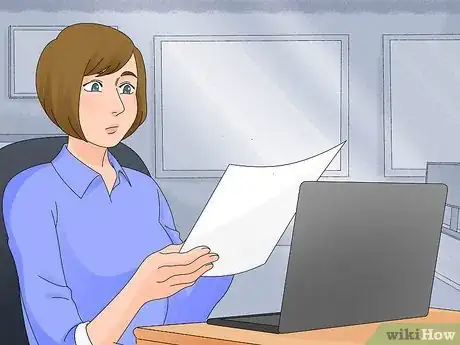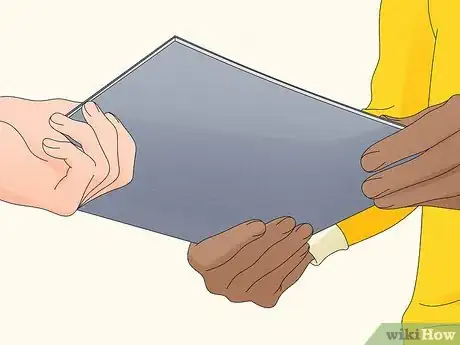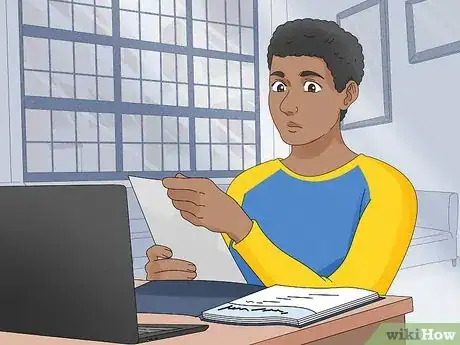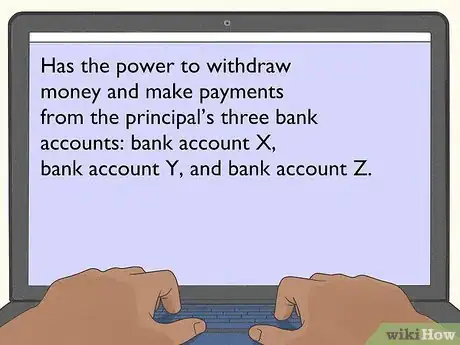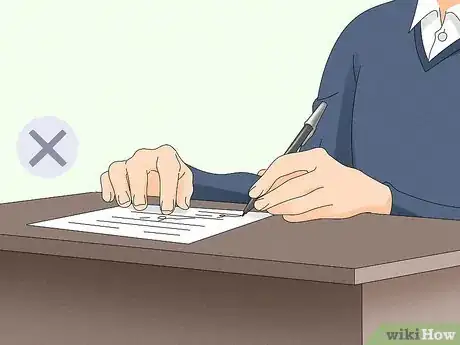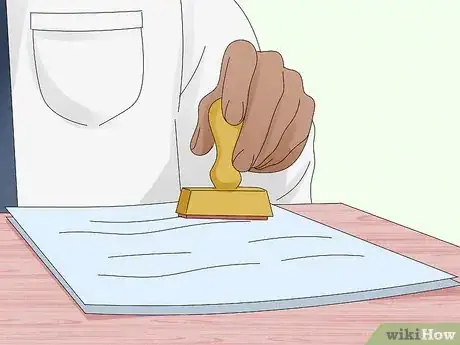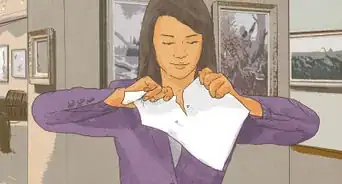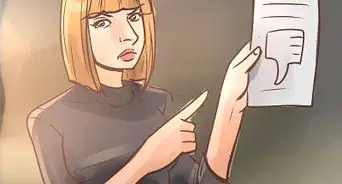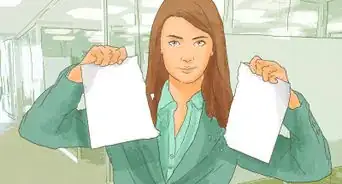This article was co-authored by Clinton M. Sandvick, JD, PhD. Clinton M. Sandvick worked as a civil litigator in California for over 7 years. He received his JD from the University of Wisconsin-Madison in 1998 and his PhD in American History from the University of Oregon in 2013.
There are 12 references cited in this article, which can be found at the bottom of the page.
wikiHow marks an article as reader-approved once it receives enough positive feedback. In this case, several readers have written to tell us that this article was helpful to them, earning it our reader-approved status.
This article has been viewed 204,687 times.
This article is written for persons living in the United States - individuals who have made a Power of Attorney in another jurisdiction should check the laws for that jurisdiction, as the requirements to legally revoke a Power of Attorney are different from place to place.
Revoking a power of attorney document in the United States is a relatively simple process, but it requires precise steps in order to revoke the document in a way that cannot be ambiguous to banks, health care authorities, etc. By taking a few minutes to learn how to revoke a power of attorney, you can easily change the terms of the document before executing a new power of attorney document if you choose.
Steps
Revoking Your Power of Attorney Document
-
1Learn who can revoke power of attorney. The person for whom the document provides power of attorney is known as the principal. The principal is the only one who can revoke the power of attorney (POA) while the principal is competent.[1]
- If the document names the agent (this is the person receiving power of attorney for the principal) a “durable power of attorney”—meaning the power of attorney includes the principal becoming incapacitated—the family of the principal can take the agent to court to attempt to get a judge to revoke the POA.
- It’s very rare that this happens because it is difficult for anyone other than the principal to sue the agent over the POA because typically only the principal has standing.
- If the document names the agent (this is the person receiving power of attorney for the principal) a “durable power of attorney”—meaning the power of attorney includes the principal becoming incapacitated—the family of the principal can take the agent to court to attempt to get a judge to revoke the POA.
-
2Decide your route of revocation. You have different options to proceed. You can revoke your power of attorney document altogether. You can also choose to revoke your current power of attorney document in order to execute a new one with different terms or a new agent.
- If you choose to execute a new power of attorney, you’ll need both parts of this article.
Advertisement -
3Learn your state’s procedure. Because all states have different procedures dealing with revocation of a power of attorney document, make sure you check the specific laws where you live before proceeding. In some states (such as West Virginia), a power of attorney can be revoked simply by the principal informing the agent of the revocation and destroying all copies of the power of attorney.[2] However, most states require a more thorough approach.
- Most states also require that the principal sign a revocation document stating that the power of attorney is revoked. Some states require this document to be signed in front of a notary.
- Even if the state where you live does not legally require the signature to be notarized, signing in front of a notary eliminates any doubt as to the authenticity of the signature.[3]
-
4Send the form to any third parties. If you sent the power of attorney document to any third parties, such as banks or physicians, make sure that you send them the document revoking the power of attorney. You can either send this document through the mail or take it to the third party’s office in person.
- If you send your revocation through the mail, be aware that the revocation will not be recognized until it is received. Therefore, if your agent acts in accordance with the power of attorney document before the revocation reaches the third party (for example, a bank) the bank can not be held liable for any money taken or used by the agent in conjunction with the power of attorney.[4] However, in this situation, you would be able to recover against the agent for any damages as long as you can prove the agent knew that the power of attorney had been revoked.
Executing a New Power of Attorney Document
-
1Check your state’s requirements. Requirements for a power of attorney are similar in most states, but some have special forms to fill out. To check whether or not your state has special forms for power of attorney, you can check here. If your situation is complicated, consider hiring an attorney to help you and your loved ones carry out the proper requirements for granting power of attorney. Usually, the document granting power of attorney must:
- Clearly identify the principal (the person who is granting the power)
- Clearly identify the agent (the person who will have the specified powers)
- Specify exactly what legal acts the agent is entitled to perform
-
2Download or write a power of attorney form. Most states don't require government-written legal documents. However, in order to prevent any confusion and to make sure that both parties know exactly what authority is being granted, it's a good idea to use a state-issued form as a template.
-
3Name the parties. The form should include the full name of the “principal,” the person granting power of attorney. It should also name the "agent," the person to whom the power is being granted.[8] Alternate agents may also be named, in the event that the first agent is unable or unwilling to act on his or her authority.
- For example, say “Jack Nimble” is the principal and “Jill Quick” is the agent. They should be referred to by those names, not just simply “Jack” and “Jill.”
-
4Name the powers granted. Make sure that you clearly and specifically identify the powers that are being granted to the agent, when those powers will take effect, and when (if ever) those powers will cease to have an effect.[9] This will prevent confusion.
- For example, instead of saying that the agent “has power over the principal’s finances,” say that the agent “has the power to withdraw money and make payments from the principal’s three bank accounts: bank account X, bank account Y, and bank account Z.”
- If the power of attorney is durable, it's especially important to make sure that the principal and the agent are in agreement about what responsibilities and authorities are being transferred.
-
5Stipulate whether the agreement is “durable.” If the principal wants the agent to have control over certain legal matters (financial or medical) immediately, and wants that power to continue to be valid after the principal has become incapacitated, choose a durable power of attorney.
- Make sure the form stipulates whether the powers are "springing durable," which means they take effect at a later date and will be not be revoked if the principal becomes incapacitated. Keep in mind that all states have different laws regarding power of attorney, and, in some states, a springing durable power of attorney cannot be legally used.
- Many seriously ill people choose a durable power of attorney because they want their agent to continue to make their decisions after they can no longer communicate their wishes, and, because of their illness, want the power of attorney to go immediately into effect.
- A situation for a springing power of attorney could be when the principal specifies in the power of attorney document that the agent would not have power until the principal was 75 years old, but once the principal reached that age, the agent would have the specified powers, regardless of the principal’s capacity.
-
6Note powers that a principal cannot confer. Make sure that the principal and agent know that some powers cannot be conferred under state law. If the power of attorney purports to transfer a power under state law that cannot be transferred, the power of attorney is void as to that power.
- For instance, even if the principal and the agent agree, the agent cannot write or execute a will for the principal. Any such will is not valid.
-
7Gather witnesses. In some states, it is necessary to have the signing of the document witnessed by one or two people.[10] If this is the case in your state, make sure witnesses are not only present but paying full attention as the agent and the principal sign the document. The witnesses should be comfortable testifying as to the document’s authenticity.
Protecting Your Power of Attorney Document
-
1Consider hiring an attorney to review the document. An attorney may notice legal issues that people who aren't trained in legal matters would not think to include or leave out.[13] For example, an attorney may notice that the document uses language that could been seen as ambiguous and could lead to confusion.
-
2Have the document notarized. Some states might not require you to have the document notarized. However, having the principal’s signature notarized eliminates any doubt regarding the validity of that signature. The notary must verify the identity of the principal before witnessing the signature. Notarizing the power of attorney document reduces the chance that it will be contested by an outside party who may question its validity.[14]
- You can find more information about notarizing a document at: How to Notarize a Power of Attorney
-
3Save the power of attorney document. A power of attorney is not filed at any governmental agency, but you must have it on hand to present it every time you use it. Keep it in a safe in your home or in a safety deposit box until the time comes when you need to bring it out.
References
- ↑ http://info.legalzoom.com/revoke-power-attorney-california-20323.html
- ↑ http://www.wvlegalservices.org/poa.pdf
- ↑ http://info.legalzoom.com/revoke-durable-financial-power-attorney-ohio-23064.html
- ↑ http://info.legalzoom.com/revoke-power-attorney-california-20323.html
- ↑ https://www.dhs.wisconsin.gov/forms/advdirectives/f00085.pdf
- ↑ https://www.leg.state.nv.us/NRS/NRS-162A.html
- ↑ http://www.irs.gov/pub/irs-pdf/f2848.pdf
- ↑ http://info.legalzoom.com/power-attorney-vs-durable-power-attorney-20053.html
- ↑ http://info.legalzoom.com/power-attorney-vs-durable-power-attorney-20053.html
- ↑ Elder Law: Cases and Materials, LexisNexis, Fifth Edition (See chapter 9, “Guardianship”).
- ↑ http://www.eko-law.com/florida-attorney-blog/florida-power-of-attorney-law/?_ga=1.195319852.1676299220.1423340119
- ↑ http://statelaws.findlaw.com/health-care-laws/durable-power-of-attorney.html
- ↑ Wills, Trusts & Estates, Dukeminier, Eighth Edition (pgs. 335-340; 448-457).
- ↑ http://info.legalzoom.com/appoint-power-attorney-22161.html
About This Article
To revoke power of attorney, start by checking the laws governing power of attorney in your state, since the procedure varies. In most states, the principal should prepare a revocation document saying that the power of attorney has been revoked, then take it to a notary to be signed. Next, send a letter to anyone that might have a power of attorney letter on file, such as a bank or doctor’s office, stating that the power of attorney has been revoked. For tips from our Legal reviewer on how to replace your old power of attorney document with a new one, keep reading.

